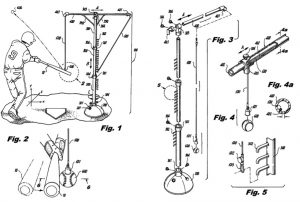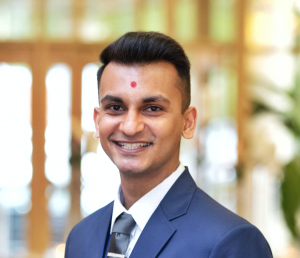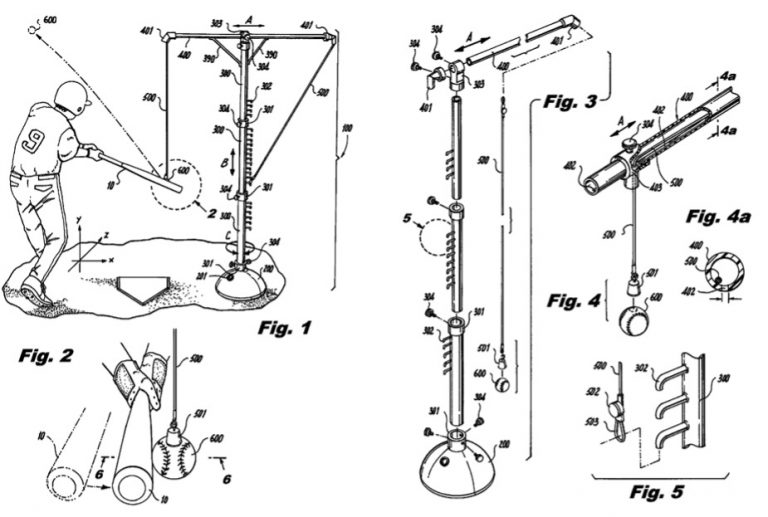Fusion
[fyoo-zhin] (noun), A process or mechanism of combining two distinct matters into one.
For most of my life, I didn’t consider law school at all. I was interested in science, technology, engineering, and math (STEM), fields that I thought had nothing to do with law. In my head, TV-depictions of lawyers like Harvey Specter or Olivia Pope were the only representations of legal work. So basically, I thought attorneys managed million-dollar-deals or put criminals behind bars.
But I started to see how legal work could overlap with STEM in my senior design class at Washington University in St. Louis (WashU). We discussed patents, an intellectual property (IP) right an inventor can use to protect their creation. Patent owners can exclude others from making the same invention.

My project for the senior design class required me to research patents. I had to design and create a demonstration for a museum exhibit that measured the vibrations in a baseball bat. The goal was to find the “sweet spot,” an area on the bat’s barrel that is best for hitting. I learned that if my design overlapped with an existing patented design, I may infringe a patent and could face a patent infringement lawsuit. Using Google Patents, I researched a baseball patent and realized how exhaustively detailed they were! I learned that there were dozens of components and designs to a single baseball patent. I found patents on specific bat designs, depicting their shape and the length of the barrel. I also found patents on machines and instruments that held a baseball at a specific angle and location for players to hit during batting practice. Finally, I found a complicated patent that illustrated multiple components, procedures, and designs which ultimately created a batting practice stand for baseball players as seen in Figure 1. After seeing these complex and nuanced designs, I now understood that patents exist at the intersection of law and STEM.
Projectile
[pruh-jek-til, -tahyl] (noun), A body or an object propelled forward.
During that senior design class, I decided law school might be a next great step.
Before applying to law schools, I wanted to ensure that I had a plan. I drafted a list of law schools I was interested in. The next step of my plan was to talk to current upperclassmen at each law school to get a feel for the environment. During the application process, I had the great fortune of speaking with several upperclassmen at Loyola University Chicago School of Law. Our conversations were genuine, relatable, and reassuring. The Loyola students told me their stories about transitioning into law school. They explained how the supportive student body and faculty made Loyola feel more like a community than just a law school. I was also drawn to and impressed by Loyola’s IP law curriculum.
I liked that Loyola’s IP law curriculum exposes students to various IP practices such as patents, copyrights, and trademarks. A large part of my law school decision was choosing a school that would propel me towards a great career. Loyola’s connection to numerous IP law firms in the Chicagoland area through professors and alumni sounded just right. And as I found out during my first semester at Loyola, that was just the tip of the iceberg.
Momentum
[moh-men-tum] (noun), A product of mass and velocity of a moving body in a given direction.
One of the most impactful factors solidifying my interest in IP law was my Fall 1L (i.e., first year of law school) Civil Procedure professor. Professor Ho is the Director of Intellectual Property at Loyola. I spoke to Professor Ho before law school. Her description of Loyola’s extensive IP curriculum convinced me to attend Loyola. Once law school started, she checked in on my progress throughout my Fall semester. Professor Ho provides IP-interested 1Ls opportunities to attend IP seminars, read IP articles, and apply to IP summer associate or legal internship opportunities as early as their first semester. In fact, due to Professor Ho’s mentorship and her connections with numerous alumni and IP attorneys in Chicago, I fortunately found a summer associate position at Banner Witcoff, an IP firm, before my second semester of 1L had even started.
Remember when I told you about my conversations with the super supportive Loyola upperclassmen? Well, their advice and conversations came to life when I took my IP legal writing class (IPLW) during my first semester. Loyola offers IP-interested students an opportunity to take IPLW, with all writing assignments centered around IP law issues. During my first semester, I wrote a legal memo on a patent issue about a pancake mix. My professor and IPLW tutor were incredibly helpful as I conducted legal research and wrote my memo, and they did a superb job helping me transition into a legal writer.
Coming from a STEM background, I had minimal experience with persuasive or legal writing. However, some parts of legal writing, especially the legal memo in IPLW, are formulaic and structured. These structured components of a legal memo felt reassuring because they were quite similar to some aspects of writing for STEM classes. In IPLW, my professor and tutor made a complex-looking patent problem for a memo assignment extremely understandable.
Launch
[lawnch, lauhnch] (verb), To set a body or an object in motion or in a projectile.
Although my journey to law school and IP law is just beginning, I am eager to see where the next two years of law school take me. I look forward to increasing my understanding of IP law through the various IP courses Loyola has to offer, such as the Patent Law Seminar and the IP Survey Class. I also can’t wait for my upcoming summer associate position!
From the time I initially considered law school during my senior design class at WashU to today, I am overwhelmed with gratitude for the continuous support from the Loyola community.

Keval Amin
Assistant Blogger
Loyola University Chicago School of Law, J.D. 2023
